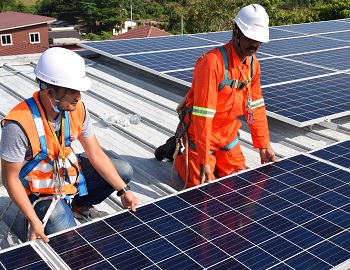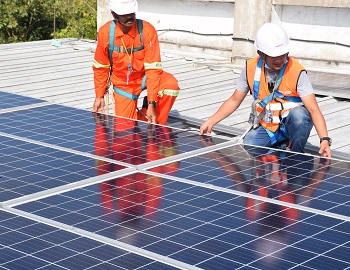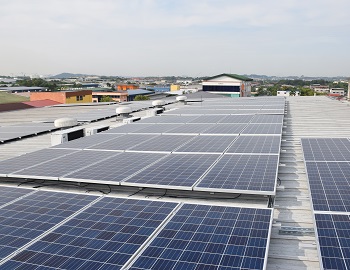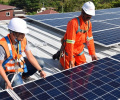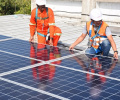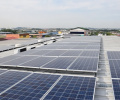Commercial & Industrial Rooftop Solution
As the green building initiative gains traction, more governments worldwide are introducing incentives for installing PV systems on rooftops in an effort to reduce reliance on traditional fossil fuel sources. This is where PESTECH comes in with its diverse team of experts in a multitude of fields to present the ideal solutions to clients.
SCOPE OF WORK
- Site feasibility studies: Include solar irradiance checks, structural analysis, and AC feed-in checks.
- PV system design and planning: Calculations and simulations to find best areas on the roof to place PV modules facing the optimum azimuth and tilt.
- Procurement: PESTECH has connections with all the major suppliers in the solar industry, allowing to bid at competitive price while providing the reliable solutions. In fact PESTECH has signed partnership agreements with some of these suppliers to further drive down the price.
- Project planning: Has an experienced team who excels at juggling multiple projects concurrently and is able to meet project milestones in a timely manner.
- Construction: PESTECH has site teams stationed in multiple countries throughout the ASEAN region. This allows for quick deployment of manpower to finish construction within deadline while adhering to local government mandates/laws – especially environmental laws.
- Financial studies: Accurate design estimations lead to accurate financial projections. This allows to give out precise quotations that rarely deviate much from initial projections.
- Asset management: PESTECH employs state of the art asset management systems which are integrated to the current workflow. This translate to more efficient planning and execution as well as faster response times to warnings/alerts.
SCALE - Small to medium scale (can reach up to 2MWdc)
PAYMENT SCHEMES
1) NEM (Net Energy Metering)
One of the more common solar payment schemes. To summarize, the asset owner of the installed PV system will typically be the building owner. Under this scheme, electricity produced from the PV system is consumed directly by the building. Doing so means the building no longer takes energy from the utility provider (apart from instances where demand exceeds energy supply). If the energy generated exceeds consumption, the excess energy gets exported to the utility grid at the same tariff rate at which energy is bought. The exported energy will be credited in the next bill and will offset next month’s payment. Low voltage commercial and low voltage industrial benefit the most from this due to their higher tariff rates.
2) Solar Leasing
The other option where the clients do not have to pay for the solar installation or pay a reduced rate. Under this scheme the client and the EPC will enter a power purchase agreement where the client will purchase electricity generated from the PV installation from the EPC at a lower rate than what they would’ve normally paid the utility provider.
TYPES OF ROOFTOP SOLAR
Some of the more common types of rooftop solar installations:
1) Retrofitted
Retrofitting is where solar panels are placed on top of the roof with the help of PV mounting structures. These mounts can be drilled on to the roof but non-drill types are available as well. This is the more economic option for buildings that have been constructed but wish to install a PV system to reduce reliance on the utility grid.
2) Building Integrated PV (BIPV)
BIPV is where the PV modules are used as the roof of the building instead of traditional roofing materials/methods. Typically these are done during the construction of the buildings. Depending on the design of the building, these can be aesthetically pleasing – even more so than retrofitted PV systems. Integrating PV modules as the roof materializes the green building philosophy as the system is part of the building instead of fundamentally being a separate system that has been added on to the building.

